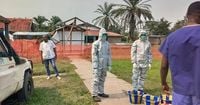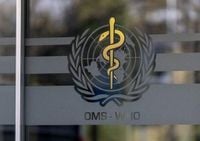In the heart of Africa, the southern Kasai province of the Democratic Republic of the Congo has been under the shadow of an Ebola outbreak, the first in nearly two decades for this remote region. But in a rare and hard-fought victory, health officials are now cautiously optimistic: the World Health Organization (WHO) announced on Wednesday that, as of October 5, 2025, no new Ebola cases have been reported for ten consecutive days. For a community that has endured weeks of anxiety and loss, this is a glimmer of hope, though officials remain vigilant.
The outbreak was first declared by Congolese authorities on September 4, 2025, a date that marked the return of a disease not seen in this part of the country for 18 years. Kasai province, more than 1,000 kilometers (620 miles) from the bustling capital of Kinshasa, is a region characterized by its remoteness and limited infrastructure—a fact that complicated the response from day one. According to the Associated Press, the initial alarm was raised amid mounting concern over the region’s capacity to handle a health emergency of this scale.
By October 5, the numbers painted a sobering picture: 64 Ebola cases had been reported, including 53 confirmed and 11 considered probable. Of these, 43 people lost their lives—32 confirmed Ebola deaths and 11 probable, according to figures released by the WHO and corroborated by Reuters. The human toll has been heavy, and the emotional scars of loss and fear remain fresh in Kasai’s communities.
The outbreak’s containment, at least for now, is a testament to the coordinated efforts of local health authorities, the Ministry of Health, the WHO, and partners on the ground. The WHO, in a statement during its recent press briefing, said, “As of Oct. 5, 2025, 10 days have passed without any newly reported cases, indicating potential control of transmission in the affected areas.” The agency attributed this success to a combination of improved logistics, field operations, and targeted interventions.
One of the most critical components of the response has been the delivery of medical supplies by both helicopter and ground vehicles—a logistical feat given the region’s challenging terrain. Over the past week, three health facilities underwent full decontamination, a process vital for halting the spread of the virus within healthcare settings. The WHO emphasized, “This steady decline in transmission and improved case management reflect the impact of coordinated interventions led by the Ministry of Health with support from WHO and partners.”
Still, the sense of relief is tempered by a note of caution. Nearly 2,000 individuals who may have been exposed to Ebola are currently under close monitoring. The WHO warned that, “a single missed contact could reignite transmission chains, especially in areas with high population movement or limited community surveillance.” The warning is not just bureaucratic language—it reflects the hard-learned lessons from past outbreaks, where a single lapse could undo weeks of progress.
Health authorities and humanitarian organizations have not been shy about voicing the challenges they faced in mounting an effective response. As reported by the Associated Press, there were urgent calls for more funding and resources in the early days of the outbreak. The remoteness of Kasai, coupled with limited infrastructure and a lack of trained personnel, made every step of the response more difficult. Helicopters and trucks carrying medical supplies had to navigate rough roads and unpredictable weather, and the decontamination of health centers required both expertise and specialized equipment.
The outbreak’s origins in such a remote part of Congo posed unique challenges. The region’s isolation, while sometimes a natural barrier to the rapid spread of disease, also means that when outbreaks do occur, getting help in quickly is a logistical nightmare. According to Reuters, the last Ebola outbreak in Kasai was nearly a generation ago, leaving local health systems with little recent experience handling such crises.
Despite the daunting circumstances, the response has demonstrated the value of international partnerships and local leadership. The Ministry of Health took the lead, but the WHO and its partners provided crucial technical support, supplies, and expertise. The Associated Press noted that the steady decline in new cases was directly linked to these collaborative efforts, particularly the rapid deployment of medical teams and the aggressive tracing and monitoring of contacts.
But the fight is not over. The WHO continues to urge caution, reminding both the public and health officials that the absence of new cases, while promising, does not mean the danger has passed. The agency’s warning about the risks of missing even a single contact is especially relevant in a region where people often move between villages for work, trade, or family reasons. In such environments, surveillance must be both thorough and sensitive to local customs and realities.
The emotional and social impact of the outbreak is still unfolding. Families are mourning lost loved ones, and communities are grappling with the stigma that often accompanies Ebola. Health workers, hailed as heroes, have faced both gratitude and suspicion—an all-too-common dynamic in the wake of infectious disease outbreaks. The lessons learned here are likely to inform future responses, not only in Congo but across the region.
As the world watches, the situation in Kasai serves as a stark reminder of both the persistent threat of Ebola and the power of coordinated, well-resourced public health action. The WHO’s cautious optimism is shared by many, but the message is clear: vigilance must not wane, and support for affected communities remains critical.
For now, the people of Kasai can breathe a little easier, even as they keep a wary eye on the future.

